Hello & Welcome! This is a Free Guide on What to Expect on Your Equestrian Photoshoot.
My name is Lidia, I am the author of this guide. Horses are breathtaking companions in photoshoots. Horses are my obsession. As a child, I would seize every opportunity to ride, even if it was just a quick park ride. As an adult, I finally began learning how to truly ride and communicate with horses — and it’s been one of the most rewarding experiences of my life. Horses teach you patience, trust, and presence. They’re not just animals — they’re partners, each with their own personality. And for me, they’ve become a source of endless inspiration, both in life and in my photography.
Whether you’re a rider yourself, a horse owner, or simply posing alongside these majestic creatures, an equine photoshoot requires preparation and collaboration. This guide will help you look and feel your best while working with horses to create stunning images.
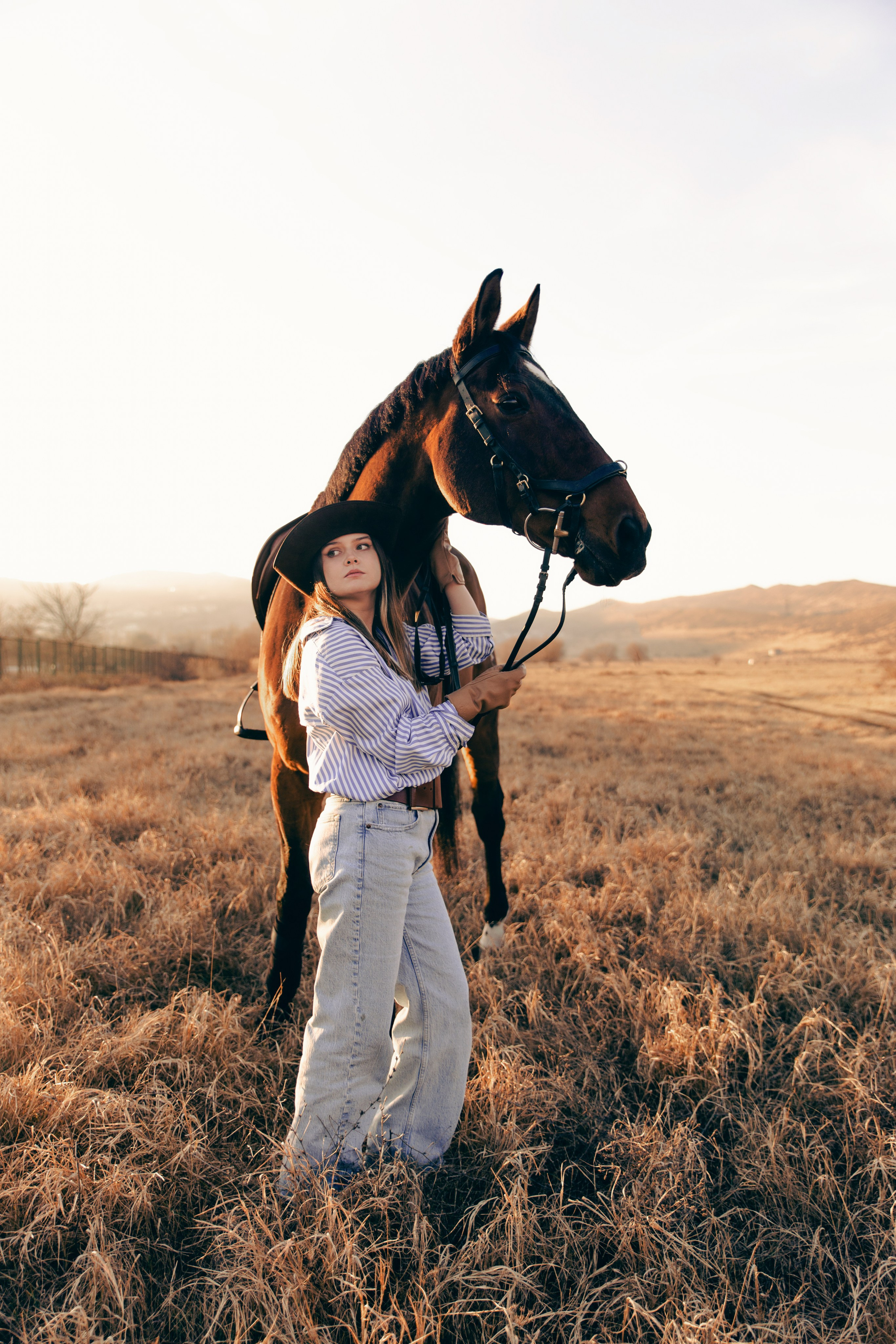
Prepare yourself
To ensure a smooth and enjoyable equestrian photoshoot experience, consider the following:
-
Discuss Your Vision:
Before the shoot, communicate your goals and expectations with the photographer. Share references or inspiration to guide the session’s style and mood.
-
Time and Outfits:
A 1–1.5-hour session is ideal for shooting with a horse, allowing for 1–2 outfit changes.
-
Be Ready for Mess:
Working with animals can get messy, so be prepared to get a bit dirty despite careful handling.
-
Weather Awareness:
Horses are often kept in open areas, so your shoot might occur on a sunny, hot day. Plan accordingly.
-
Essential Items to Bring:
- Makeup tissues and cotton pads for quick touch-ups.
- Comfortable shoes suitable for walking around the location or mounting a horse.
- Water to stay hydrated.
- Sunscreen to protect yourself from sun exposure.
These tips will help you enjoy your session while capturing stunning moments with your horse! If you’re interested in an equestrian photoshoot, I’d be delighted to work with you! Here you’ll find all the details about pricing and session conditions.
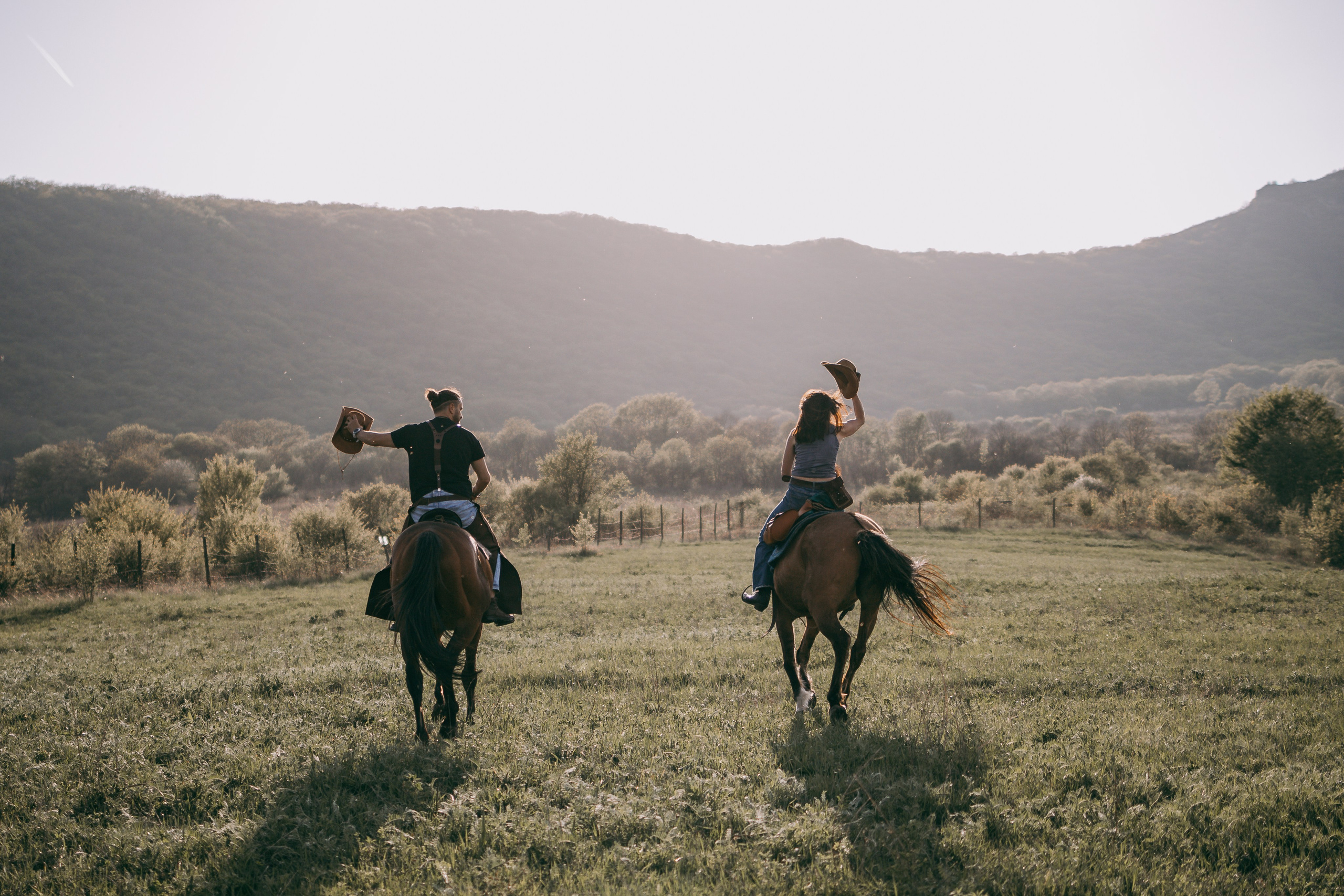

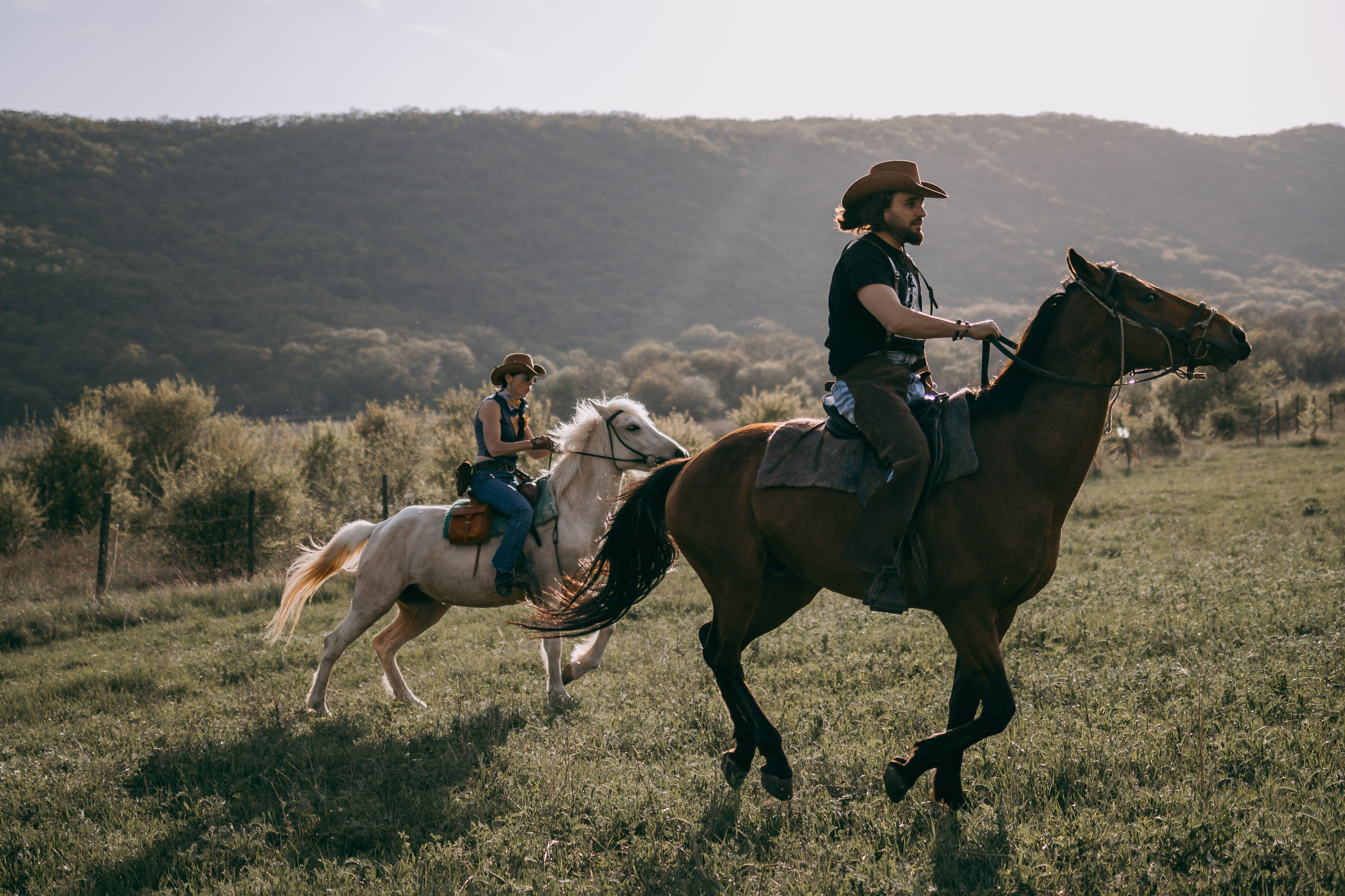
Prepare the horse
A well-prepared horse is essential for a smooth photoshoot and stunning results:
If you own the horse:
- Groom the horse thoroughly, brushing its coat until it’s smooth and shiny.
- Pay special attention to the mane and tail; braiding them can add an elegant touch if it fits the shoot’s theme.
- Polish the tack and accessories to ensure they’re clean and match the aesthetic.
If you’re renting a horse:
- Spend some time with the horse before the shoot to build trust.
- Use gentle strokes and speak softly to help the horse relax around you.
Collaborate with the photographer:
- Discuss how the horse’s color and tack should complement your outfit.
- For example, a black horse pairs beautifully with soft pastels, while a chestnut horse looks stunning against earthy tones.
Interacting with the horse
Horses are living and empathic beings, and how you interact with them affects the photos.
Body Language
- Stay relaxed: Horses can sense tension, and your nervousness may make them uneasy.
- Be gentle: Use soft, calming gestures when touching the horse—caress its neck, mane, or face to encourage a natural, affectionate demeanor.
Engagement Techniques
- Build a connection: Smile softly or speak calmly while making eye contact with the horse for a candid, emotional moment.
- Use treats wisely: With the handler’s permission, offer treats to grab the horse’s attention or reward its good behavior.
- Embrace spontaneity: Allow the horse to move naturally at times to capture dynamic and unexpected moments.
Guiding the Horse
- Move fluidly: Walk the horse using a loose lead rope, ensuring your movements are smooth and confident.
- Pose with intention: If seated on horseback, maintain good posture with shoulders back, hands soft, and your gaze either forward or toward the horse for an elegant composition.
Safety is non-negotiable when working with such large and powerful animals. Always assess the horse’s mood — if it seems agitated, give it space to calm down. A horse that pins its ears is likely angry, and you should be cautious. Positioning is crucial: avoid standing directly behind or too close to the horse’s legs to prevent accidental kicks. Most importantly, listen to the handler, as they’ll provide essential cues and instructions to ensure everyone’s safety.
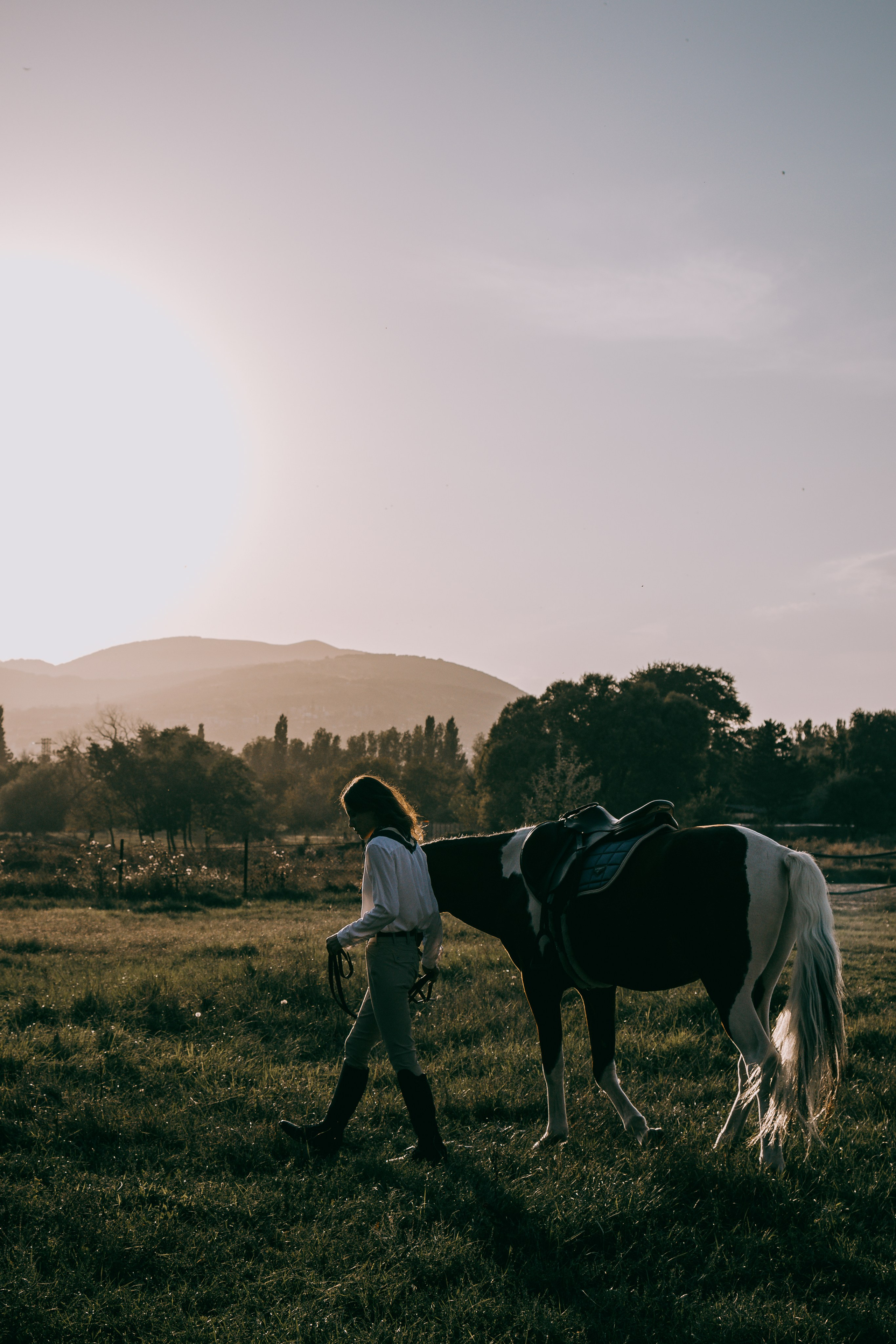
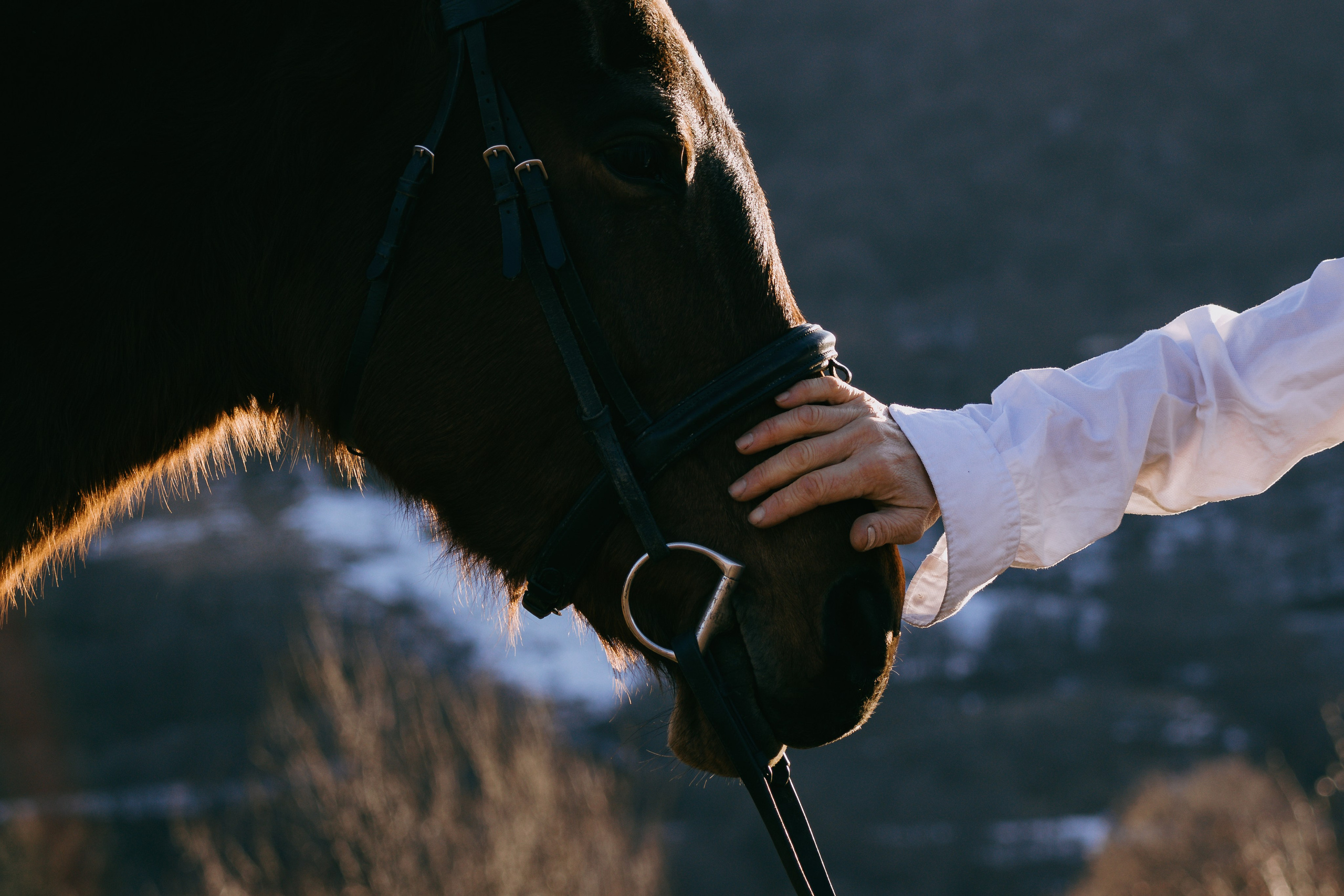
Timing & lighting
The best approach to timing and lighting is to discuss it directly with the photographer to determine the ideal conditions for the shoot. If you are having a photoshoot in an open field, weather conditions and good natural lighting are crucial.
The ideal time for outdoor shoots with horses is during the golden hour — shortly after sunrise or before sunset. During these times, the light is softer and more flattering, creating warm, golden tones that enhance the natural beauty of both the horse and the model. This will also help minimize harsh shadows and overly bright highlights, ensuring a more balanced and timeless look to your images.
Posing tips
Here are some tips to help you feel comfortable and confident, whether you’re sitting in the saddle, standing beside your horse, or capturing motion. Don’t feel limited by these suggestions: they’re just a starting point to inspire you. There’s always room for creativity in posing and angles!
Sitting in the Saddle
Sitting in the saddle allows us to showcase your connection with your horse and adds an air of elegance and confidence to your portrait.
- Posture: Sit tall with your back straight, but keep your shoulders relaxed. If you’re riding naturally, let your body flow with the movement of the horse. Relax your arms and hold the reins softly, or let your hands rest on the saddle if you’re not actively guiding the horse.
- Gaze: Look straight ahead to convey focus and strength, or turn your head slightly to the side to give a softer, more introspective feel. If you want a more intimate shot, a glance toward your horse will emphasize the connection between you and your animal.
- Horse Positioning: The horse can stand still, or we may have it slightly angled, with its head turned toward you to enhance the bond between you both.
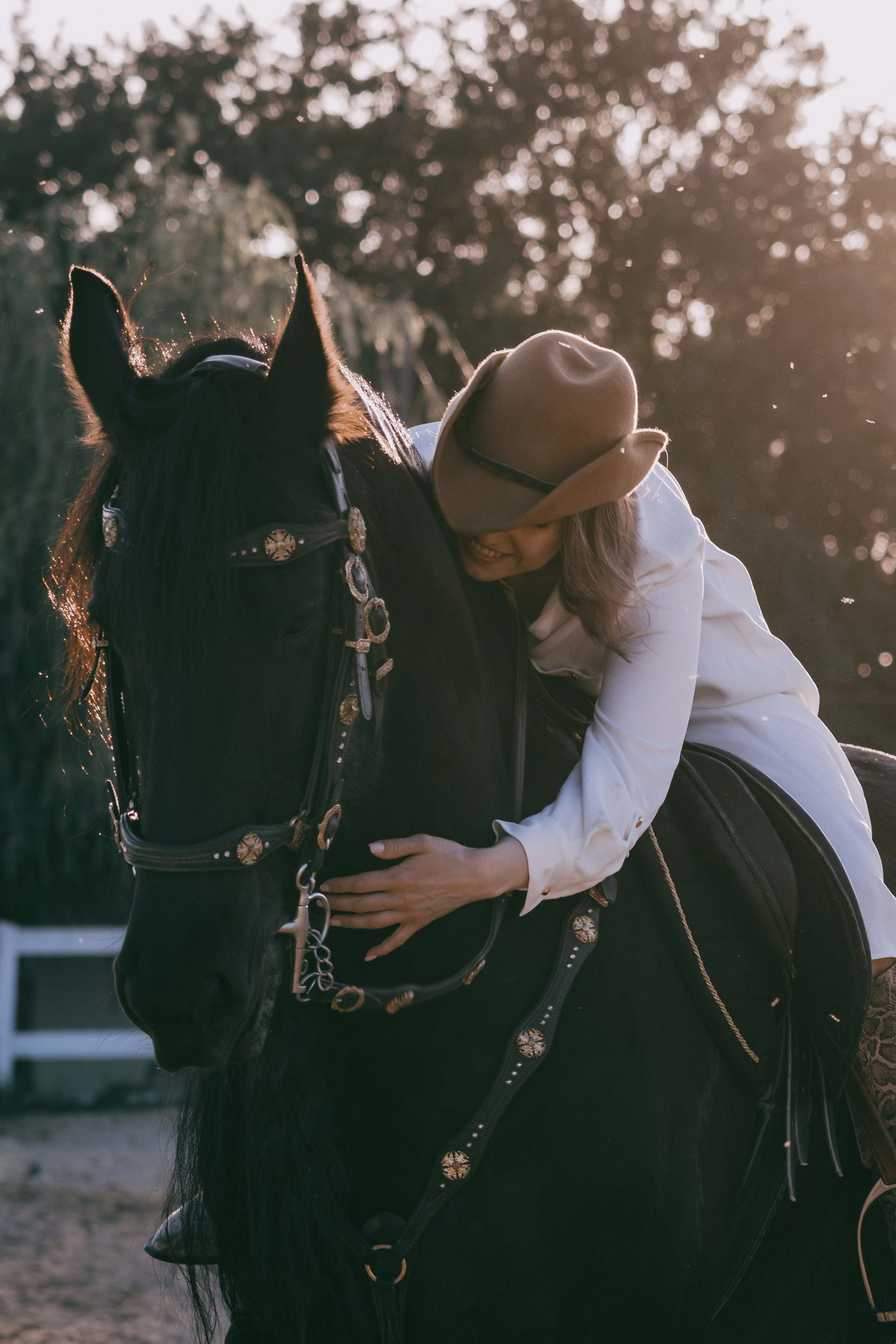
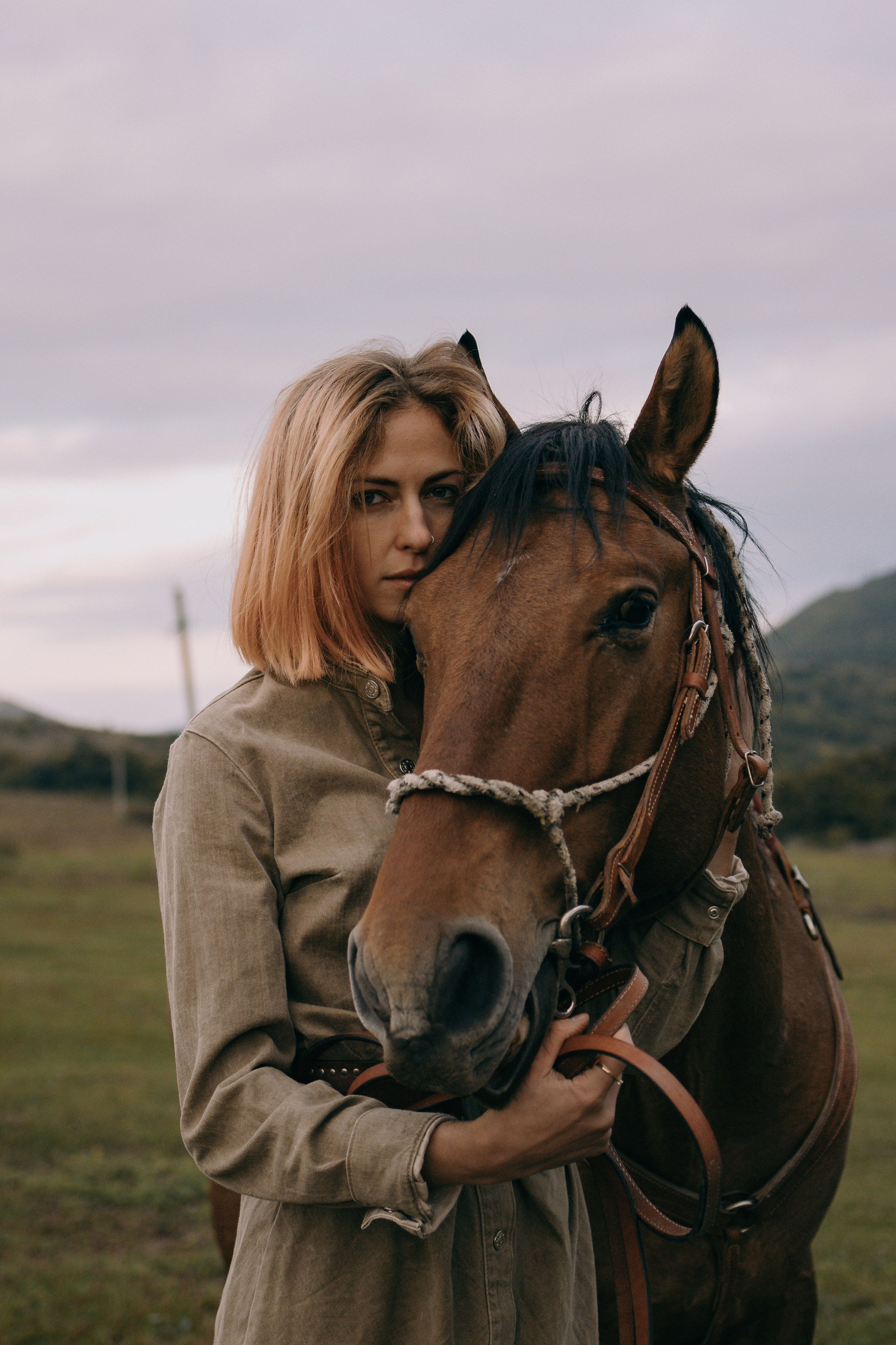
Standing Beside Your Horse
Standing beside your horse offers a more grounded, calm look. This is perfect for showcasing both your strength and your horse’s grace.
- Posture: Stand tall but relaxed, with one hand gently resting on your horse’s neck or shoulder. Keep your arms comfortable, not stiff. Stand slightly turned toward the horse for a more natural feel, but avoid crossing your arms as it may seem tense.
- Connection: You can smile or look into the distance, depending on the mood you’re going for. Soft, natural expressions are often the most powerful.
- Horse Positioning: The horse should be turned slightly toward you or standing parallel. This helps show the mutual connection between you two, whether you’re holding the reins or just standing in quiet harmony.
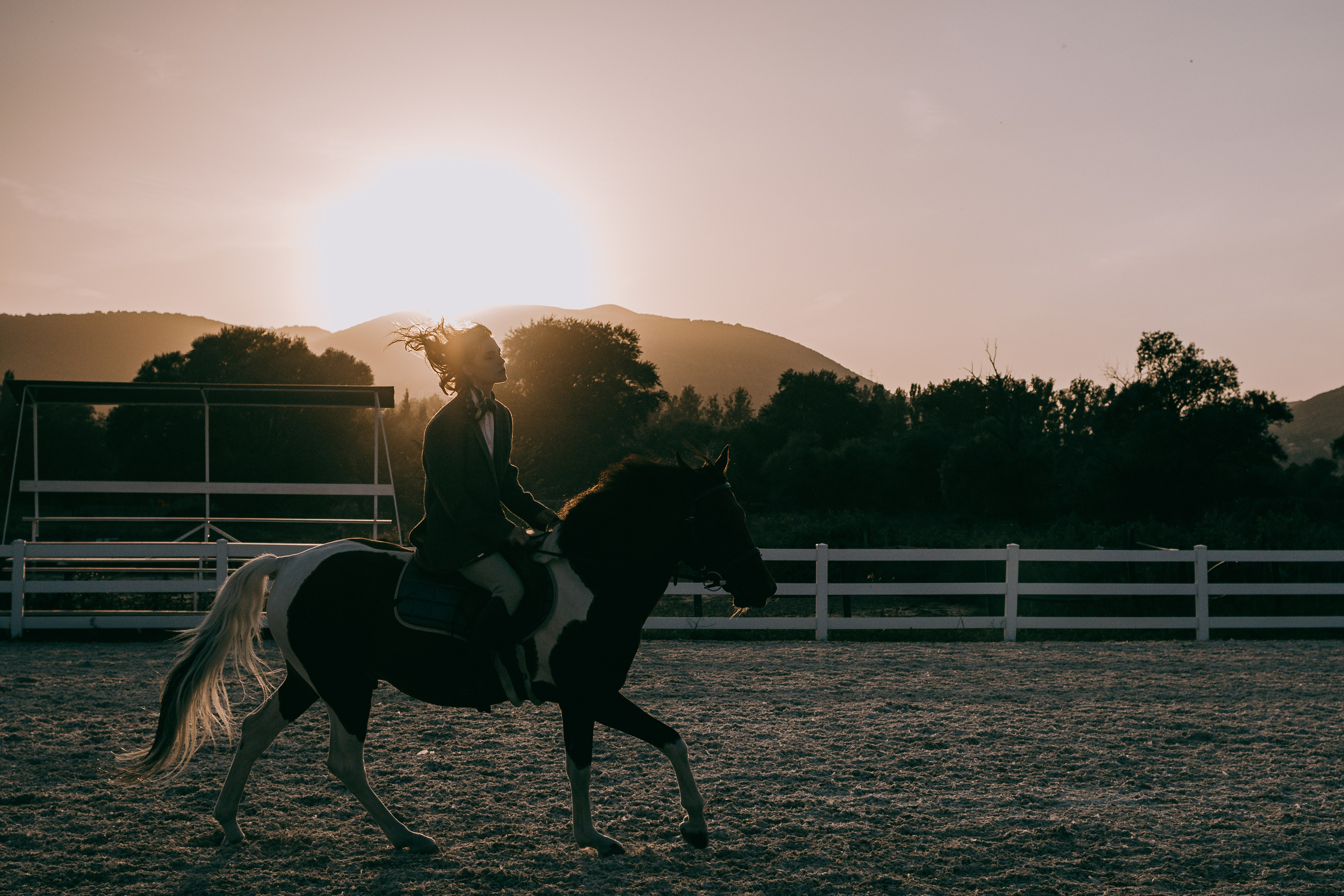
Walking or in Motion
Motion shots are dynamic and lively, perfect for showing the energy of both you and your horse. These can be great for expressing freedom, power, and the joy of movement.
- Movement: Walk or lightly jog alongside your horse, keeping your stride natural. The goal is to move with your horse’s rhythm, creating a sense of fluidity in the shot. Don’t worry about being too perfect — natural movement looks best.
- Connection: Let your hands rest lightly on the reins or keep them relaxed at your sides. If you’re at a faster pace (like a trot or canter), position your hands accordingly. Most importantly, prioritize safety: if you’re not comfortable cantering, stick to a trot, and if trotting feels too fast, walk instead.
- Horse Positioning: As the horse moves alongside you, we’ll aim to capture the grace and power of its stride. It may be slightly ahead, behind, side-by-side with you, or under the saddle, depending on the motion.
Contact me
If you have any questions, want to learn more about booking a photoshoot with me, or just feel like sharing your thoughts about this guide, I’d love to hear from you! Feel free to reach out anytime.